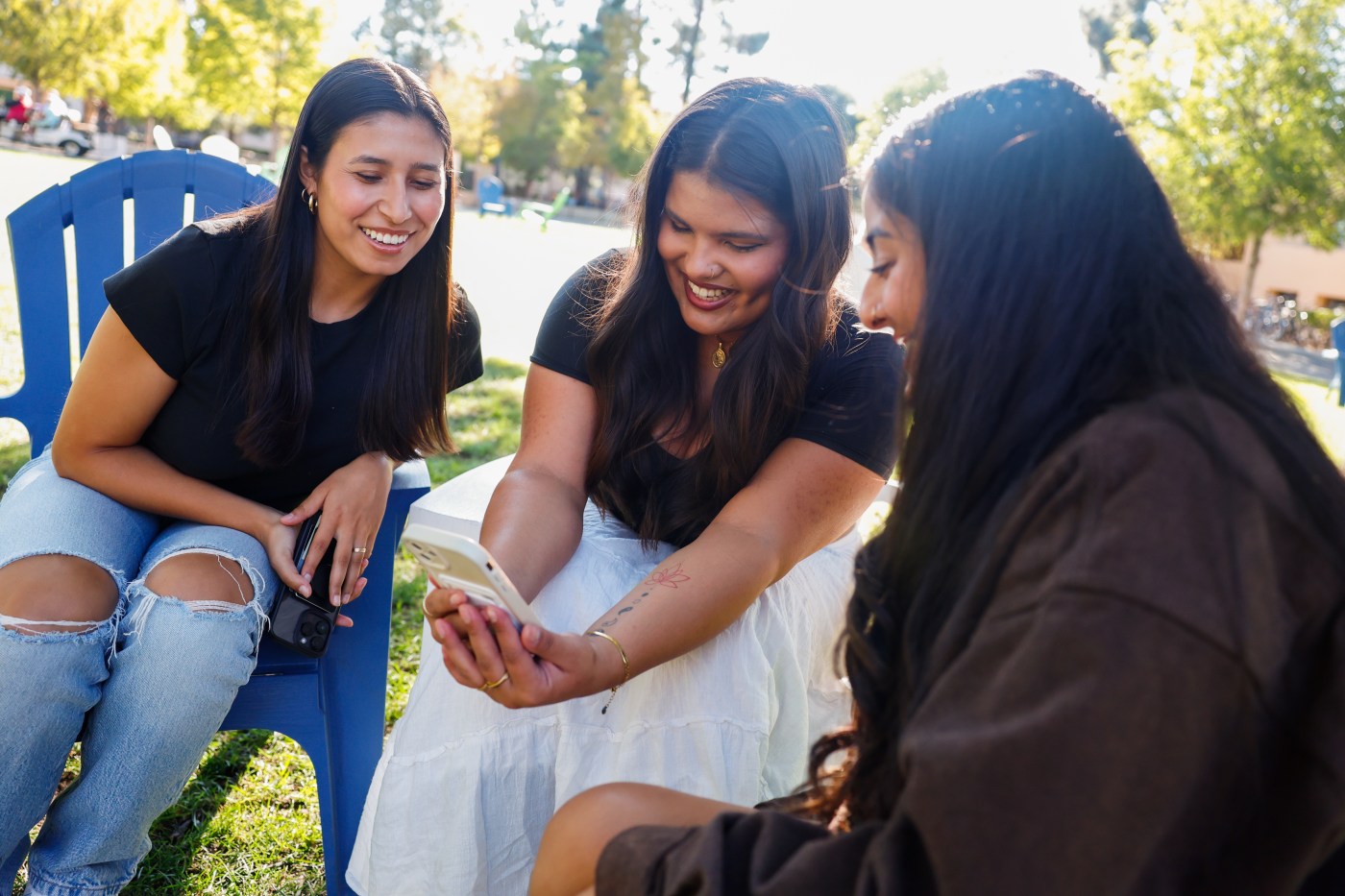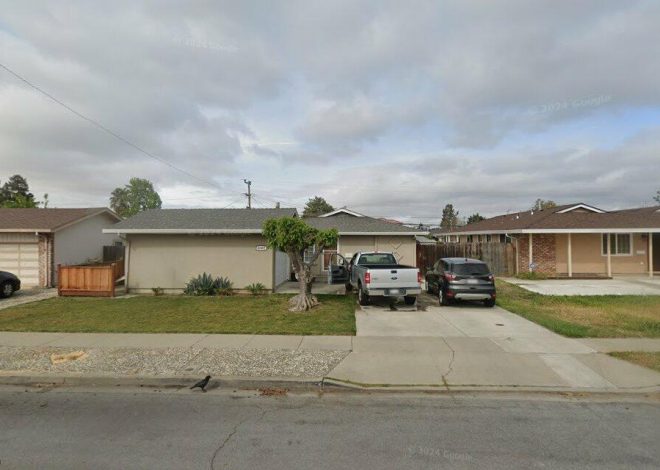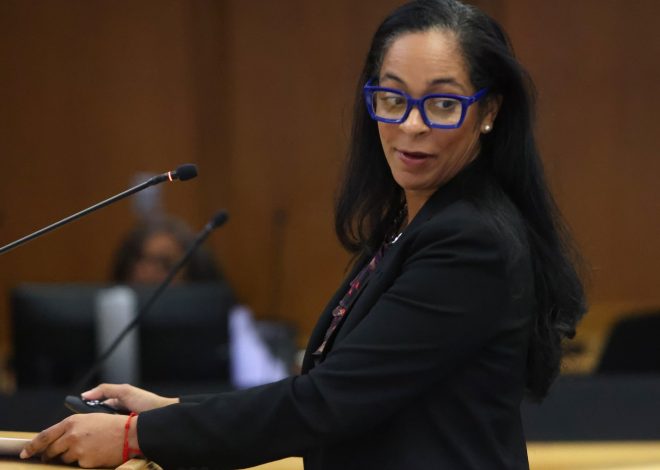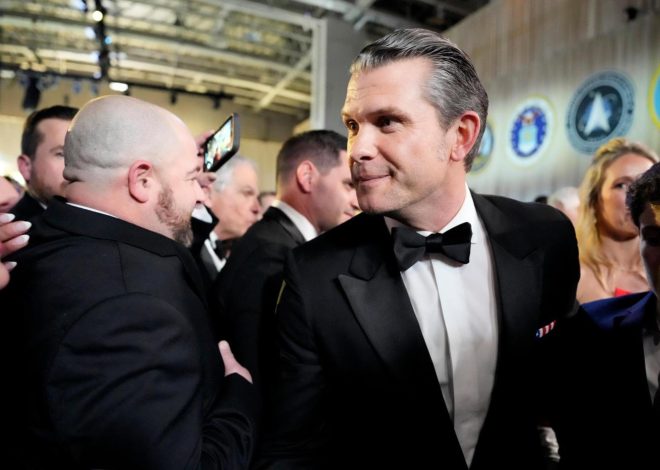
Harris, Trump turn to social media to lure young Bay Area voters
With political polls showing Donald Trump and Kamala Harris neck-and-neck in the race to be the next U.S. president, both campaigns are feverishly working to sway any lingering undecided voters and persuade all of their supporters to vote.
And that includes wooing young voters, who are notoriously difficult to turn out. Whether their efforts pay off in an election with razor-thin margins remains to be seen and might not be known on Election Day.
The Harris camp, in particular, has poured time and money into beefing up the vice president’s presence on popular social media platforms like Instagram and TikTok. A recent poll from the Institute of Politics at the Harvard Kennedy School shows Harris holds a 31-point lead over Trump among 18-to-29-year-olds.
Since the former Democratic senator from California entered the race this summer after President Joe Biden dropped out, her campaign has vastly outspent the Republican former president on social media advertising.
Harris spent more than $13.6 million on ads on Meta, Facebook and Instagram’s parent company, in a two-week span from Sept. 23 to Oct. 5, according to nonpartisan political ad analyst, the Wesleyan Media Project. Trump spent just a fraction of that in the same time period — a little over $2.1 million.
While it’s unclear how much Harris has spent on advertising on TikTok, her campaign’s account @KamalaHQ has amassed 5 million followers and posted more than 500 times since early July. Harris’ personal account, @kamalaharris, has 6.5 million followers, compared to Trump’s personal account @realdonaldtrump, which has more than 12.5 million followers but has posted only around 40 times. Trump’s campaign account @teamtrump has about 4 million followers on TikTok.
Chima Nwokolo, a senior political science major at San Jose State University, said both the Harris and Trump campaigns have capitalized on Gen Z culture to energize and engage young voters — Harris through memes and humor, and Trump through endorsements from rappers and football players, including Kanye West and Kansas City Chiefs kicker Harrison Butker.
“It really went from an election in which two generic old men were competing against each other to the potential historical opportunity for the U.S. to elect their first female leader,” Nwokolo said.
UC Berkeley junior Utkarsh Jain, a spokesperson for the university’s Republican student organization, said while he thinks the Democratic Party has done a better job overall of jumping on trends and marketing itself on social media, Trump is the exception.
Utkarsh Jain, the spokesperson for the Republican Party at UC Berkeley, looks on from a lawn in Berkeley, Calif., on Friday, Oct. 25, 2024. (Ray Chavez/Bay Area News Group)
“Trump is a celebrity. He’s been a celebrity all his life so he knows how to play. He knows that world,” Jain said. He’s “bringing in a lot of new people that we’ve never seen in the Republican Party.”
The Harris and Trump campaigns did not respond to requests for comment from this news organization.
The biggest shift this year from previous elections has been Harris’ focus on targeting different media platforms, including social media and popular podcasts, said Jan Leighley, a government professor and political scientist at American University in Washington, D.C. Harris joined Alex Cooper’s show, “Call Her Daddy,” recently in an attempt to reach Cooper’s 5 million weekly listeners — most of whom are women under the age of 35. Trump has looked to podcasts, too, appearing recently on the nation’s most listened-to podcast, the “Joe Rogan Experience,” in a bid for the show’s young male audience.
Harris’ late entry into the race could have forced her campaign to prioritize social media to overcome the disadvantage of a shortened campaign season, Leighley said.
“The branding, the amount of money that’s being spent through social media and how it’s being used, I think her presence on nontraditional media outlets that are especially appealing to the group of individuals she has to get — I think that’s a bigger emphasis than what we’ve ever seen a candidate have,” Leighley said.
For some Bay Area college students, Harris’ approach has paid off, inciting a level of engagement and excitement among young voters.
Vivian Shepherd-Mayen, a 20-year-old junior at Stanford University, initially wasn’t thrilled when Harris became the Democratic nominee. She disagrees with her policies on immigration and the Israel-Hamas war.
Then she came across the @KamalaHQ TikTok account. Now she’s “obsessed.”
She said while it would “still hurt a little” to check Harris’ name on her ballot, the account has made her feel more connected to the vice president and “humanized” her campaign.
“I can’t imagine her campaign without the social media aspect of it,” Shepherd-Mayen said. “It’s a little bit like dry humor, which I feel like is a lot more Gen Z — the dry humor, the memes. It’s really exciting to see. I’ve never seen that in any campaign because typically the people running are really old and don’t understand the memes.”
Stanford senior Isha Kalia said Harris’ presence on TikTok has made the election more accessible for younger voters who don’t typically watch cable or the news.
“It’s her campaign making an active effort of reaching out to our age demographic and meeting us where we are rather than expecting us to meet them where they are,” Kalia said. “It just makes you learn so much more about her policies and what she’s interested in.”
But the strategy hasn’t worked on all young voters.
Samantha Sternstein, a junior at San Jose State University, said the Harris campaign’s use of Instagram and TikTok to reach young voters can feel “inherently manipulative” as a way to use Gen Z culture to pander to voters, even though she is voting for her.
“I’m sure it’s effective for people who are undecided and aren’t sure if they’re going to vote, which are the people that we actually need to vote,” Sternstein said. “But as someone who has been decided — knows that they’re voting (and) who they’re voting for — I feel like it’s not as effective for me.”
Despite both campaigns’ efforts to get young voters to the polls, some Bay Area students remained on the fence about who they would vote for in the waning days of the campaign — and whether they planned to vote at all.
UC Berkeley freshman, Sage Barden was one of those undecided voters.
Related Articles
Conservative parental rights group targets Bay Area school board elections
In California, employers must give you time off to vote. Here’s how that works
Rep. Eric Swalwell files claim against Pamela Price after ‘defamatory statements’
Who are the wealthy donors flooding Oakland’s election with out-of-town cash?
California propositions: Proponents and opponents have spent over $300 million this year
“I’ve seen a few of his (posts) on TikTok,” Barden said, referring to Trump, “but Kamala definitely hires young people who know how to appeal to Gen Z voters.”
Ultimately, government professor Leighley said it’ll take more than a witty TikTok video to get young voters to the polls and it’s just as important to ensure that potential voters have the support and resources they need to actually cast their vote.
“Could it influence young voters to be more likely to vote? I think it could,” she said. “It’s a possible step in the right direction. But I think in the end, it’s not just where we get information or the nature of information. Voting is a social and truly political act that we have to be connected to.”


